Sealife guideThe marine mollusks
Last updated on 10/16/2025 at 11:50 PM
Mollusks don't ring a bell ? The term mollusk literally refers to animals with a « soft body ». You probably know our friends, the snails, which belong to the class of terrestrial mollusks !
Now let's focus on marine mollusks, the phylum that interests us. Here, you'll find all the shells you come across at the beach during your vacations ! But this phylum isn't just made up of shells, it also includes the octopus, squid and cuttlefish, which belong to the class of cephalopods.
Let's take a closer look at shells ! You've probably noticed that their shapes vary, but so do their structures. Indeed, the shell is made up of:
- either a single monolithic part, like the snails: these shells belong to the class of gastropods
- or two parts that close up as soon as you touch them. It's this latter feature that gives the class of bivalves its name !
A large variety of seashells
As for the shape of their shells, it also varies for gastropods – remember the shells that are made of one single piece – such as the periwinkle, whelk or limpet with their conical shape that resembles a Chinese hat and the abalone shaped like an ear. For bivalves, we have the elongated shape of the knife, which resembles the object of the same name and the more classic, squat shapes of clams or cockles, as well as those of mussels, oysters and finally, the very characteristic shape of the scallop shell and the rough penshell.
Taxonomy
Ultimately, the marine mollusk phylum is divided into 6 main classes, namely:
- the bivalves with shellfish whose shell consists of 2 parts called valves
- the monoplacophorans, which are mollusks with a single-piece shell that is either conical – like a Chinese hat – or flattened.
- the polyplacophorans, more commonly known as chitons, are mollusks whose shell is composed of eight articulated plates
- the scaphopods, which are mollusks whose shells are either elongated and curved or shaped like a tooth and open at both ends.
- the cephalopods with the common octopus, squid and cuttlefish
- the gastropods with shellfish like 'snails' with a single-piece shell but not exclusively, this class also includes sea slugs – mollusks without an external shell.
The mollusk phylum totals around 100,000 species, but with an uneven distribution among the different classes.
Description
Mollusks, as indicated by the origin of their name, are animals with soft bodies and lacking a skeleton.
The body of mollusks consists of a muscular foot and an external covering called the mantle, which houses the various organs. It is primarily the mantle that contributes to the formation of the shell.
For mollusks with shells, the mantle forms a fold around the shell's perimeter, creating a cavity called the pallial cavity. This cavity houses the respiratory organs or gills, known as ctenidia.
Almost all mollusks, except for bivalves, possess a tongue called the radula, equipped with a multitude of small teeth, much like a rasp.
Geographic range
Mollusks can be found at all latitudes and across all the oceans on the surface of the globe.
Habitat
Although some mollusks live fixed to a substrate, they are generally free-moving animals. Mollusks primarily live on the seafloor, making them benthic animals, but some species are pelagic and capable of moving freely in the water column.
Mollusks can be found at all depths, including abyssal depths.
Diet
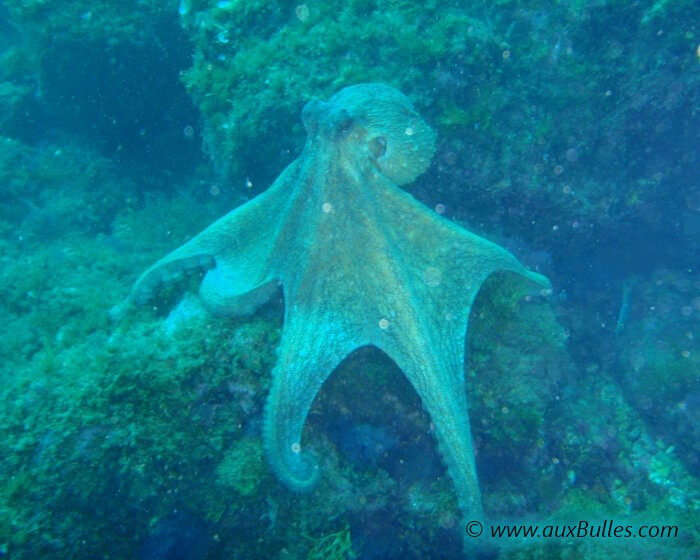
The cephalopods, including the common Mediterranean octopus
Dietary habits vary depending on the class. Bivalves are filter feeders, consuming particles and plankton suspended in the water. Gastropods, equipped with their radula (a tongue shaped like a rasp), "graze" algae on the surface of rocks or polyps from gorgonians. Finally, cephalopods capture fish, crustaceans or other mollusks.
Reproduction
Mollusks exhibit sexual reproduction.
Some marine bivalves to discover
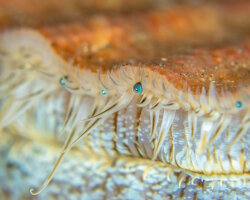
Coquille Saint-Jacques
(Pecten maximus)
(Pecten maximus)
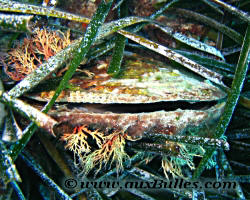
Grande nacre de Méditerranée
(Pinna nobilis)
(Pinna nobilis)
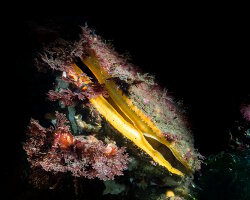
Pétoncle des roches
(Crassadoma gigantea)
(Crassadoma gigantea)
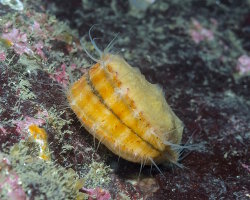
Pétoncle épineux
(Chlamys hastata)
(Chlamys hastata)
Some marine cephalopods to discover
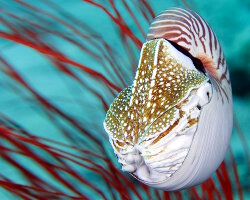
Nautile flammé
(Nautilus pompilius)
(Nautilus pompilius)
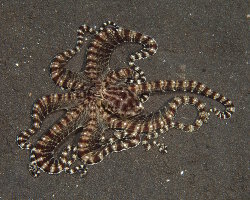
Pieuvre mimétique
(Thaumoctopus mimicus)
(Thaumoctopus mimicus)
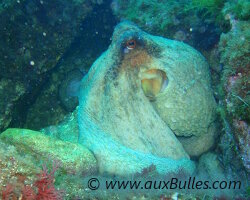
Poulpe commun
(Octopus vulgaris)
(Octopus vulgaris)
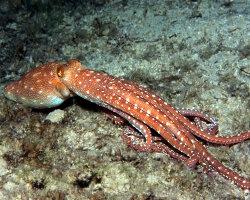
Poulpe tacheté
(Callistoctopus macropus)
(Callistoctopus macropus)
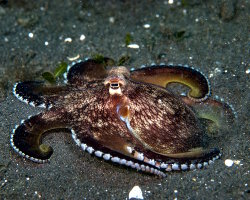
Poulpe veiné
(Amphioctopus marginatus)
(Amphioctopus marginatus)
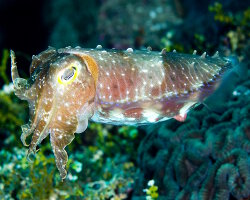
Seiche à grandes mains
(Ascarosepion latimanus)
(Ascarosepion latimanus)
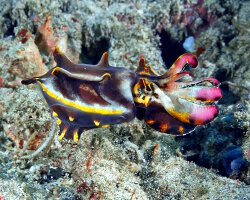
Seiche flamboyante
(Metasepia pfefferi)
(Metasepia pfefferi)
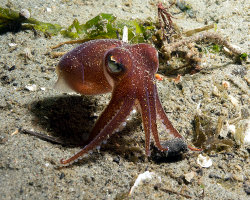
Sépiole du Pacifique boréal
(Rossia pacifica)
(Rossia pacifica)
Some marine gastropods to discover
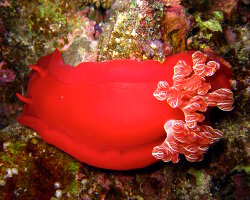
Danseuse espagnole
(Hexabranchus sanguineus)
(Hexabranchus sanguineus)
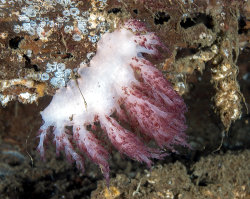
Dendronotidé rouge
(Dendronotus rufus)
(Dendronotus rufus)
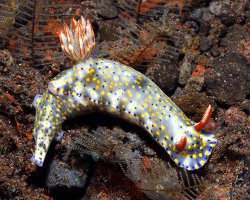
Doris kanga
(Hypselodoris kanga)
(Hypselodoris kanga)
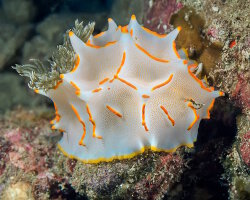
Halgerda bonbon
(Halgerda bacalusia)
(Halgerda bacalusia)

Jorunna funèbre
(Jorunna funebris)
(Jorunna funebris)
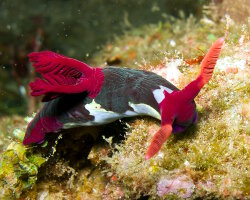
Limace de mer de Chamberlain
(Nembrotha chamberlaini)
(Nembrotha chamberlaini)

Limace de mer frisée
(Elysia crispata)
(Elysia crispata)
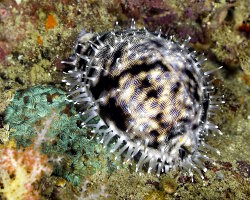
Porcelaine tigre
(Cypraea tigris)
(Cypraea tigris)
Our latestUpdates

Friday, December 19th 2025
The magic of Christmas decorations
Discover Christmas decorations in Florida: giant trees, illuminated palm trees, magical light displays and tropical settings to experience the holiday magic under the sun.
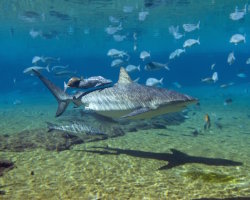
Monday, December 15th 2025
The dusky shark
Discover the dusky shark, one of the world's largest coastal sharks, and learn why this powerful predator is essential to marine ecosystems.
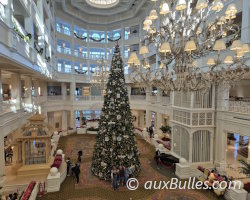
Friday, December 12th 2025
Christmas magic at Disney hotels
Experience the magic of Christmas at Disney hotels: enchanting decorations, giant Christmas trees, dazzling lights and a festive holiday atmosphere.
Photo of the Day
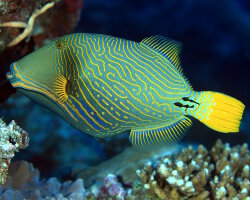
Baliste à rayures orange
(Balistapus undulatus)
(Balistapus undulatus)




